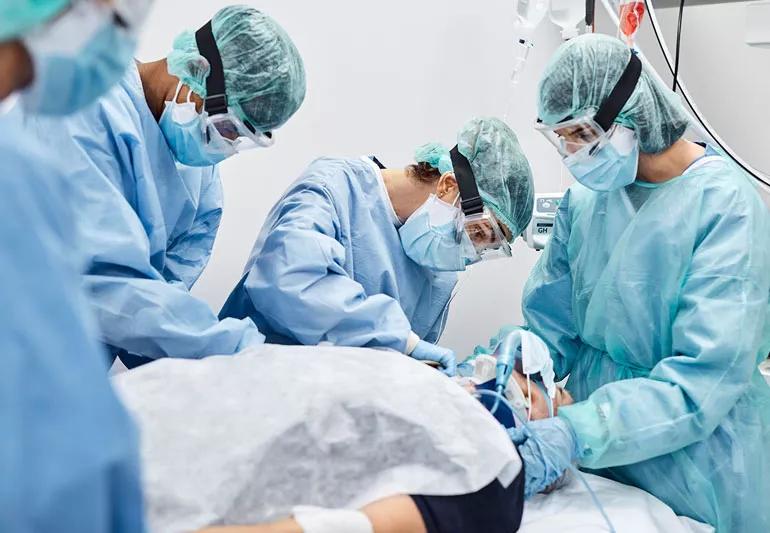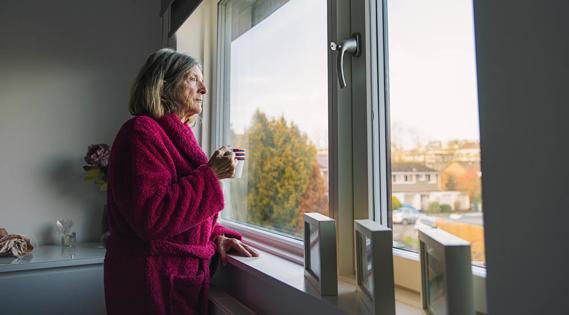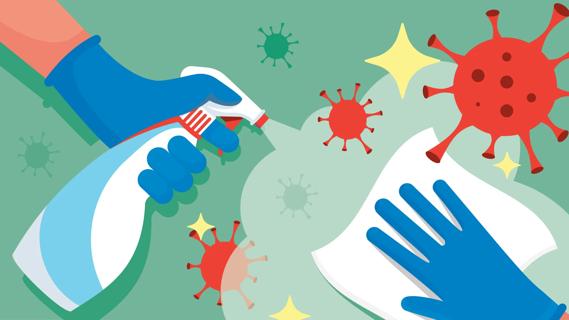Advertisement
Prevention is key to making sure everyone in your community can get the care they need

Healthcare workers are understandably exhausted. Many hospitals are teetering on the edge of being overwhelmed – or already there. Yet more people than ever need medical care for severe complications of COVID-19.
Advertisement
Cleveland Clinic is a non-profit academic medical center. Advertising on our site helps support our mission. We do not endorse non-Cleveland Clinic products or services. Policy
So what happens now?
As the COVID-19 pandemic surges in many parts of the country, hospitals must figure out how to manage an influx of people who are very sick with COVID-19 on top of their usual patient loads.
“We’re concerned and, due to how fast COVID-19 cases are rising, we’re actively planning to try to keep up with demand,” says Medical Director of Hospital Operations Rita Pappas, MD.
Hospitals prepare for this, and there are ways they can increase their capacity to care for patients who urgently need it. But to do that, they usually have to take resources away from other kinds of care they provide to communities.
Here’s a look at what that means and what you can do to help protect healthcare in your own community.
A hospital’s capacity is how many beds it has to care for patients. This includes patients who are hospitalized for medical care – such as cancer treatment, surgeries, or labor and delivery – and those who need specialized care in the intensive care unit.
To be able to help all of those patients, a hospital also needs the appropriate amount of staff and supplies, such as medicine and personal protective equipment. A shortage of any of those things could affect the care a hospital can provide.
Advertisement
Most hospitals usually operate somewhere near their capacity. This means there’s not a lot of excess room during normal times. So when something happens that creates lots of extra need for hospital care – like a disaster or a pandemic – they have to try to balance the limited resources they have with that demand.
Hospitals and public health experts spend a lot of time planning for these situations. But as the U.S. faces the largest surge of COVID-19 yet, the number of people getting sick and needing to be hospitalized is climbing so quickly that it’s stretching even the most well-prepared hospitals thin. (Data shows COVID-19 surpassed heart disease as the leading cause of death in the U.S. during the week after Thanksgiving.)
One issue is space. Some hospitals feel the pinch especially in their ICUs, which have a limited number of beds reserved for the very sickest patients.
ICUs have sophisticated equipment that can help keep people alive when their organ systems are failing. That includes ventilators, which some very sick COVID-19 patients are put on when their lungs become so inflamed that they can’t breathe well on their own.
According to Dr. Pappas, about 20% of patients who are hospitalized with COVID-19 end up going to the ICU. That’s created a big need for ICU beds and the highly skilled and trained staff that care for those patients.
Other parts of the hospital are being squeezed by the pandemic, too. Laboratories, for example, have been swamped by a never-ending stream of COVID-19 tests. Nurses are busy helping monitor patients who are recovering at home.
Then, there’s the fact that healthcare workers are just as likely as anyone else to get infected with COVID-19 in their everyday life. Many hospitals face additional staff shortages because a significant portion of their workers are sick and unable to come to work.
“If the surge continues, then labor will be a real issue,” Dr. Pappas says.
Hospitals create “surge plans” to help navigate situations like this. “What we’re trying to do is balance the resources we have for both COVID care and non-COVID care,” Dr. Pappas says.
Sometimes that requires them to make difficult decisions about prioritizing care.
For example, to deal with staffing shortages, some hospitals have postponed non-lifesaving procedures such as cosmetic surgeries and joint replacements. This frees up workers to help treat hospitalized patients who need urgent care. But it can also be very disappointing and frustrating if you’re someone whose long-awaited surgery has been postponed.
Hospitals that are part of a larger health system might also consolidate all of their COVID-19 patients into one or more designated locations. This makes it easier to them follow best practices for infection control, but it could also mean that other patients can’t get all of the non-COVID-related care they usually get at those locations.
Advertisement
In extreme cases, hospitals have opened temporary field hospitals to accommodate additional patients. But without extra healthcare workers to staff them, that’s not an option.
As cooler temperatures bring people indoors and the holidays tempt people to gather with family and friends, experts are bracing for the situation to get even worse.
“We usually see a big surge two weeks after a holiday,” Dr. Pappas says.
To help protect our healthcare system and ensure that everyone will still be able to get all of the care that they need, Dr. Pappas says following COVID-19 safety precautions is more important than ever.
That means wearing a mask, following physical distancing guidelines, washing your hands and thinking carefully about your holiday plans.
You’re probably tired of doing these things, but they’re the best prevention measures we have right now. Vaccines are coming soon, and they should help get the pandemic under control. But we have to balance our optimism for them with the reality of the current situation.
Advertisement
Learn more about our editorial process.
Advertisement

Studies have shown promising results, but additional research is needed

Infection and inflammation can cause you to lose your voice and have other voice changes until you’re fully healed

A COVID-19 infection can bring on depression or anxiety months after physical symptoms go away

Just like the flu, COVID-19 continues to evolve every year with new and smarter variants

The latest omicron subvariants carry specific mutations that may allow the SARS-CoV-2 virus to be better at evading immune protection

You can work out with mild COVID-19, but not in a gym, and listen to your body and don’t overdo it

Most people can return to work and regular life when they’re symptom-free for 24 hours

Lysol Disinfecting Wipes are just one of more than 500 products approved by the EPA for protection against the SARS-CoV-2 virus that causes COVID-19

If you’re feeling short of breath, sleep can be tough — propping yourself up or sleeping on your side may help

If you fear the unknown or find yourself needing reassurance often, you may identify with this attachment style

If you’re looking to boost your gut health, it’s better to get fiber from whole foods